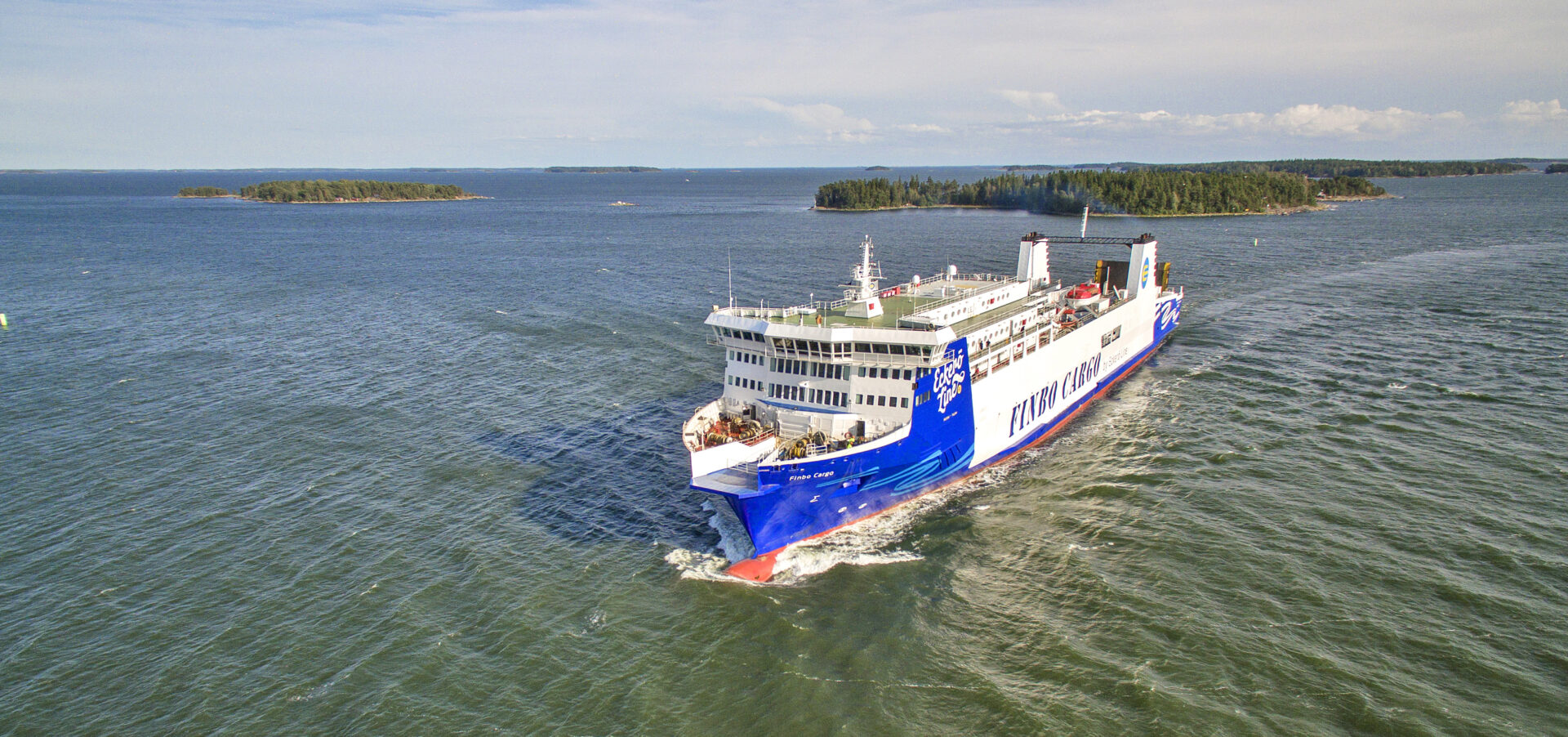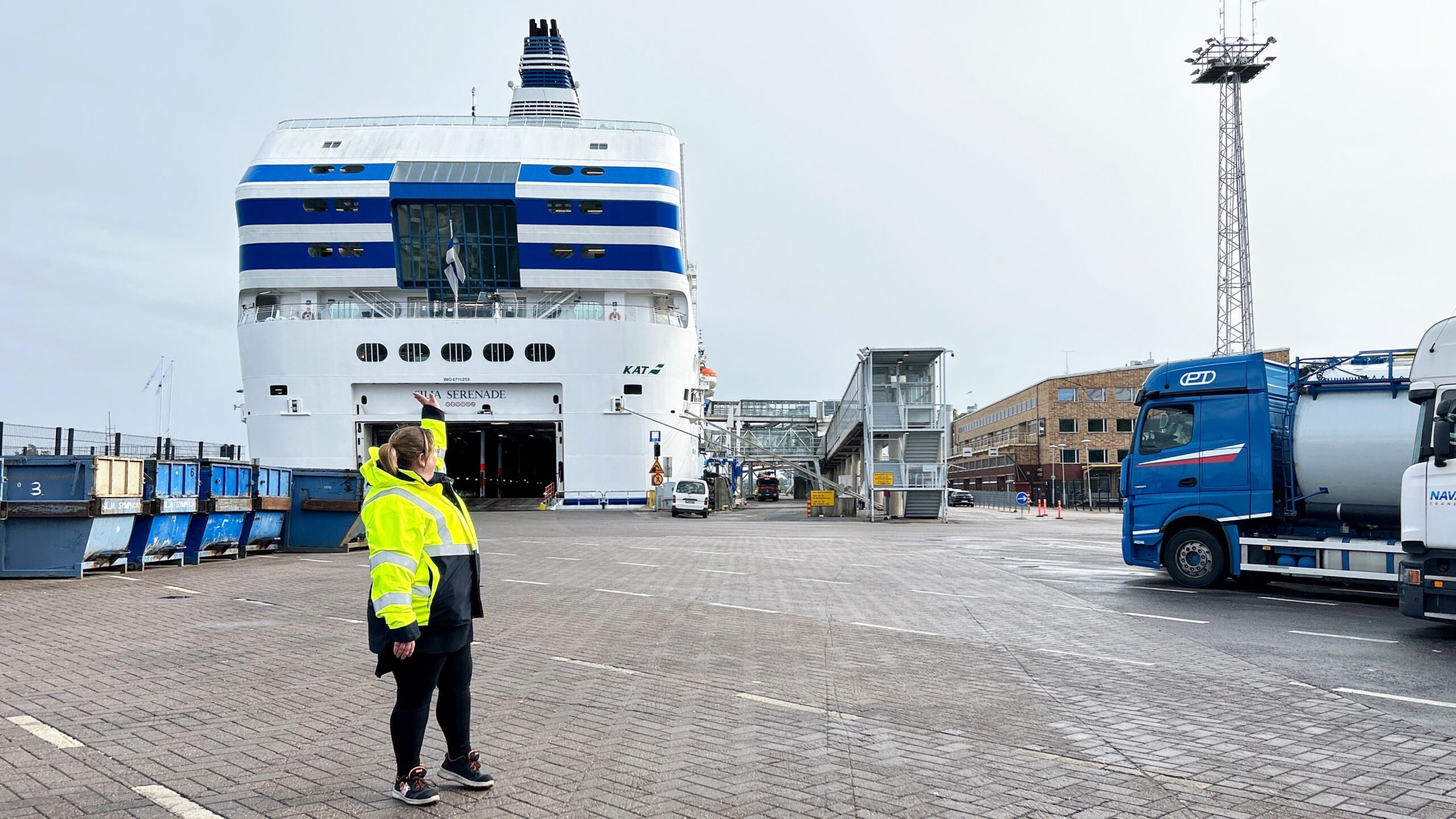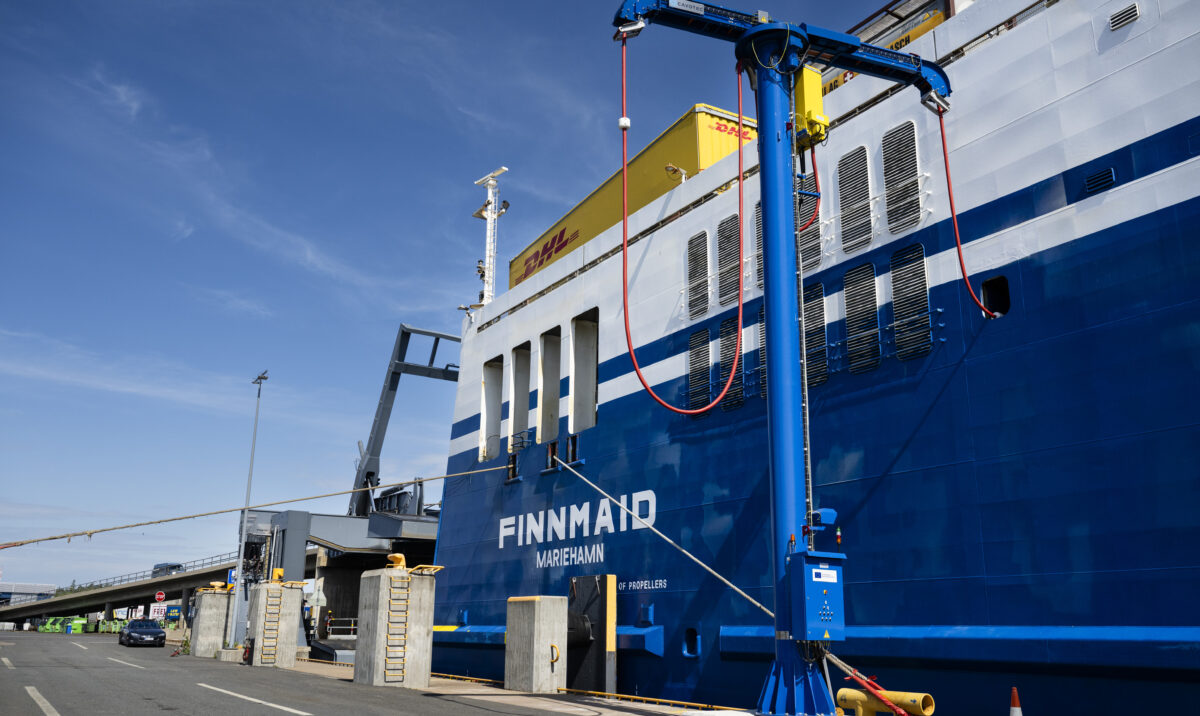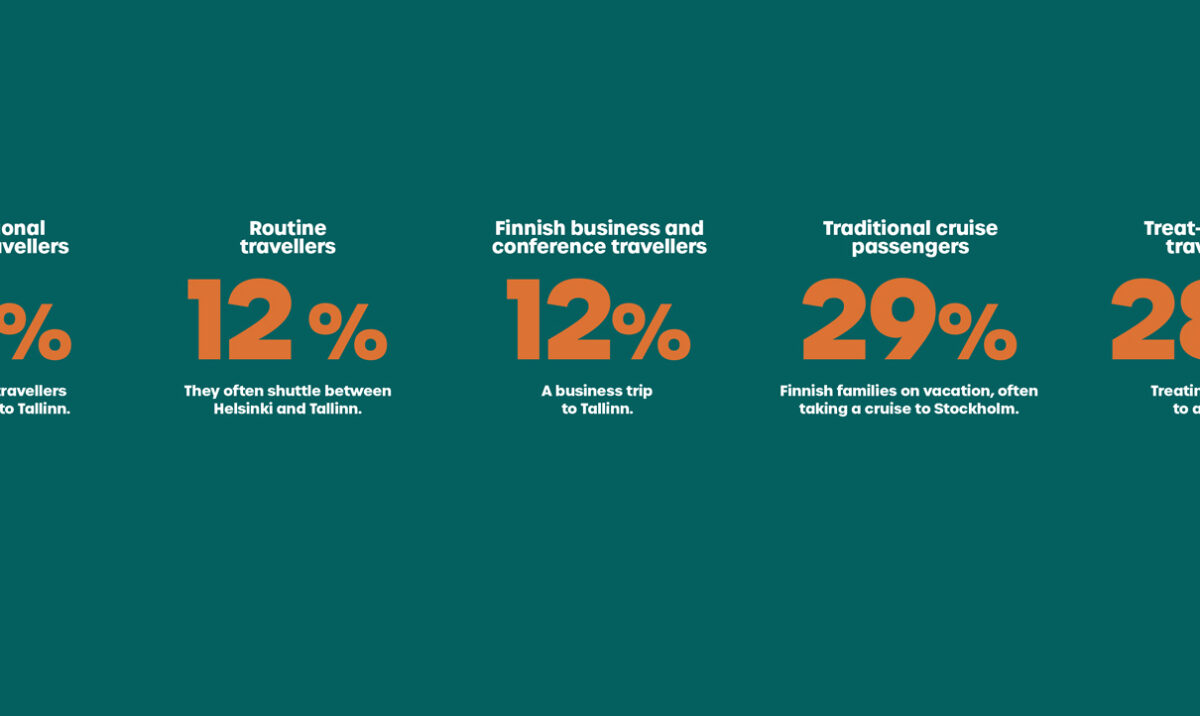
What does the year 2024 look like for shipping companies?
We once again asked shipping companies how the current year has gone in terms of cargo and what next year looks like. Cargo volumes have increased on the whole, but the outlook for next year remains foggy. Most investments are related to environmental issues.
Shipping companies have been recording no less than double-digit growth figures for 2023. Expectations for next year are also optimistic, if a little uncertain.
Maersk already has an emission-free feeder vessel
“The current year has gone as expected, and as long as the rest of the year is free of surprises, we’ll be able to record double-digit growth for this year. Our personnel are highly committed to doing great work together. This positive mood is also nicely reflected in our result,” says Satu Lindeberg, Sales Director and Managing Director at Maersk Finland.
“We’ve recovered from – and also learnt from – many of last year’s crises. They’re no longer complicating our business as such, but we’re on standby to react as necessary. At head office level, we’re also committed to safeguarding security of supply in Europe and Finland, again as necessary and upon request.”
“We expect next year to be slightly busier than this year in terms of container traffic. Provided, of course, that there are no shifts in the market that would destabilise global supply chains, for instance, in China or the USA.”
Competition is naturally fierce, as there are many service providers and capacity on ocean routes is being increased.
“We are, however, confidently heading into the new year. Maersk is highly committed to the Finnish market and is a reliable partner for its customers’ foreign trade in both imports and exports.”
Competition is naturally fierce, as there are many service providers.
Maersk’s first emission-free, methanol-fuelled feeder vessel (2,200 teu) began serving Nordic routes in October. More similar vessels are on the way, and the next one will start running at the beginning of the year. Maersk is aiming to be emission-free by 2040, and has been progressing towards this target according to plan.
“Finnish customers are also more aware of these things, and the ECO option will be gladly noted in competitive tendering for 2024,” says Lindeberg.
Eckerö shortens turnaround time
Eckerö Line’s Cargo Director, Tomas Sjödahl, says that innovations have given the company forward momentum.
“Conservative estimates indicate that we’ve been doing well in spite of the downswing in the market. We’ve still managed to achieve cumulative growth of 11 per cent over the past year. We introduced new Linkspan ramps at ports on the Helsinki–Muuga route in mid-April. These ramps enabled us to reduce our ship turnaround time to 45 minutes, and we were able to add an extra departure in both directions. So we now have three departures a day each way, instead of the previous two. The departure frequency is now sufficient, and increases our customers’ confidence in us.”
Allowing drivers to stay on the quayside overnight is another innovation.
“Truck drivers can spend the night in the loading lanes at Vuosaari Harbour and the West Harbour in Helsinki and Terminal A in Tallinn. This speeds up loading and reduces congestion. As our first departure is at six o’clock in the morning, we can get the cargo into the area by midnight. The Helsinki-Muuga route has also reduced traffic volumes in both city centres.”
“The outlook is a bit unclear. Tougher times may lie ahead. Emissions trading will begin in the eurozone at the beginning of next year, bringing new costs with it, and road tolls in Germany will almost double. The effects of international crises are also being reflected in high inflation, such as increased fuel costs. Add the reduced quantities of goods, and the equation looks quite bad.”
The outlook is a bit unclear.
“Sustainability is very important to us. Alternative fuels are being considered, and when m/s Finlandia is next docked, the ship’s helms will be repositioned in relation to the propeller in order to control slipstreams more efficiently and reduce fuel consumption,” says Sjödahl.

Image: Tuuli Turpeinen
Tallink has leased out some ships
Tallink Silja’s Deputy CEO Janeka Rauva considers cargo traffic to be fairly stable, even though the economic downturn is affecting operators in the sector.
“In general, profit in the cargo market has remained somewhat subdued throughout the year. A larger decline in activity has been seen in the construction and forestry industries, but no change has been detected in consumer goods. Cargo volumes between Finland and Estonia have remained fairly stable for Tallink Silja over the past four months, and the rest of the year is not expected to bring any real changes in these volumes. Cargo volumes are currently about 10 per cent lower than in 2022. Cargo volumes on Finland–Sweden routes have also remained fairly stable and are approximately three per cent lower than in 2022.”
“We’re delighted that passenger numbers are steadying again after the crisis in spite of the economic challenges and price increases.”
“We’re working hard to minimise any price increases and additional fees for our customers over the coming year, but the cost of providing high-quality service has inevitably risen year on year. Our business still revolves around being the market leader in Europe, although leasing out some of our ships has ensured a steady stream of revenue that has been beneficial in an uncertain global situation.”
The shipping company operates five different routes in the Baltic Sea using seven passenger-car ferries and two cargo ships.
“We transported 4.4 million passengers and almost 250,000 cargo units during the first nine months. Five of our ships are still leased out to other companies as accommodation, and one ship is also waiting at the Port of Tallinn for further decisions to be made,” says Rauva.
Viking Line’s cargo increased or unchanged
Harri Tamminen, Vice President of Cargo at Viking Line, sees the current year in a positive light, yet is uncertain about the coming year.
“The five vessels we have operating in the Baltic Sea combine passenger traffic with cargo shipments. The current year has to date been largely favourable, and we have succeeded in many areas. Volumes in our various cargo categories have either increased or remained unchanged. This is a long-term business in which trust must be earned through good service.”
“It’s hard to say anything very definite about the coming year. It’s possible that cargo volumes will decrease throughout the sector. Next year will probably be one of short cycles, with us keeping a close eye on the situation. International crises have reduced the size of the market and inflation has resulted in high price pressures. We’ll do what we can, but price corrections will probably have to be made. Emissions trading surcharges, which will come into effect at the beginning of the year, will also add to this. Our customers will have to go through this with their own customers and subcontractors. The impacts will be felt all the way down the supply chain.”
Next year will probably be one of short cycles.
“We’ll make one route change in early 2024, as m/s Cinderella will start running from Katajanokka in Helsinki at the beginning of March. The ferry will also start sailing under the Finnish instead of the Swedish flag. We’re hoping for open and understanding dialogue with the City’s traffic planning department to ensure that there will be no further hindrance to traffic flows in downtown Helsinki. We’ll be striving for transparency on our part,” says Tamminen.
Finnlines gains market share
“We’ve not been immune to inflation and general economic trends. Volumes were at a good level in early 2023, but fell during the summer. The entire autumn has been rather sluggish compared to normal. Yet our market share has still increased in both Germany and Sweden in spite of the declining market”, says Merja Kallio-Mannila, Commercial Director at Finnlines.
“The current crises have been reflected in increased costs. As the economic situation is also causing a fall in volumes, we’re working with our customers to solve the inequality that now faces us.”
“We’ll continue to invest in new ships, upgrade technology in older vessels, and switch to environmentally friendly fuels when they are sufficiently available. Both we and our customers are fully behind the green transition.”
“When emissions trading comes into effect in maritime transport, we’ll start charging the EU ETS environmental fee to compensate for carbon dioxide emissions. However, our modern and efficient fleet will allow us to charge a competitive environmental fee.
Finland’s competitiveness is currently being put to the test in our main market area, as road tolls will rise dramatically in Germany and rail traffic will also be subject to considerable cost increases. This increase in tax-like charges will be so substantial that it cannot fail to impact transport volumes. We’re expecting a sluggish start to the year at least.”
“Cargo ships and their schedules have remained largely unchanged. It seems as if cargo is even more weighted towards Helsinki when volumes are low. Our new routes are not all tied to Finland, as we’ll be launching a weekly roro connection to Vigo at the beginning of the year and will be increasing the frequency of traffic on our Bilbao–Zeebrugge/Antwerp routes. We’ll also launch a ropax connection on the Malmö–Swinoujcie route.”
“Our acclaimed ropax ferry Finnsirius started operating on the Naantali–Långnäs–Kapellskär line in September, and her sister ship Finncanopus will enter service on the same route in February. As passenger services improve, so does cargo capacity. The evening departures from Sweden at the beginning of the week have been very full, but we’ve also been able to offer extra space by adding capacity,” says Kallio-Mannila.





